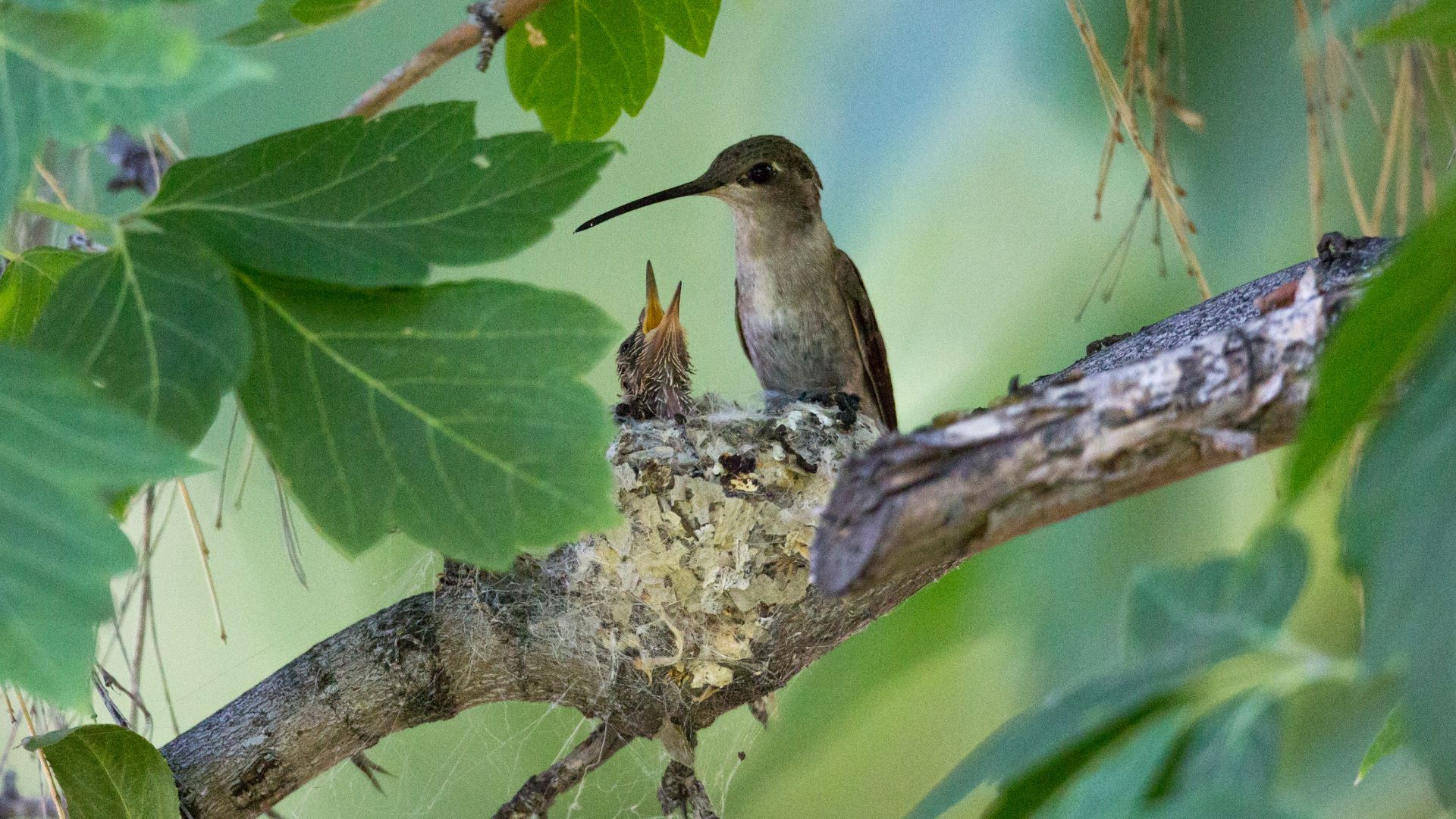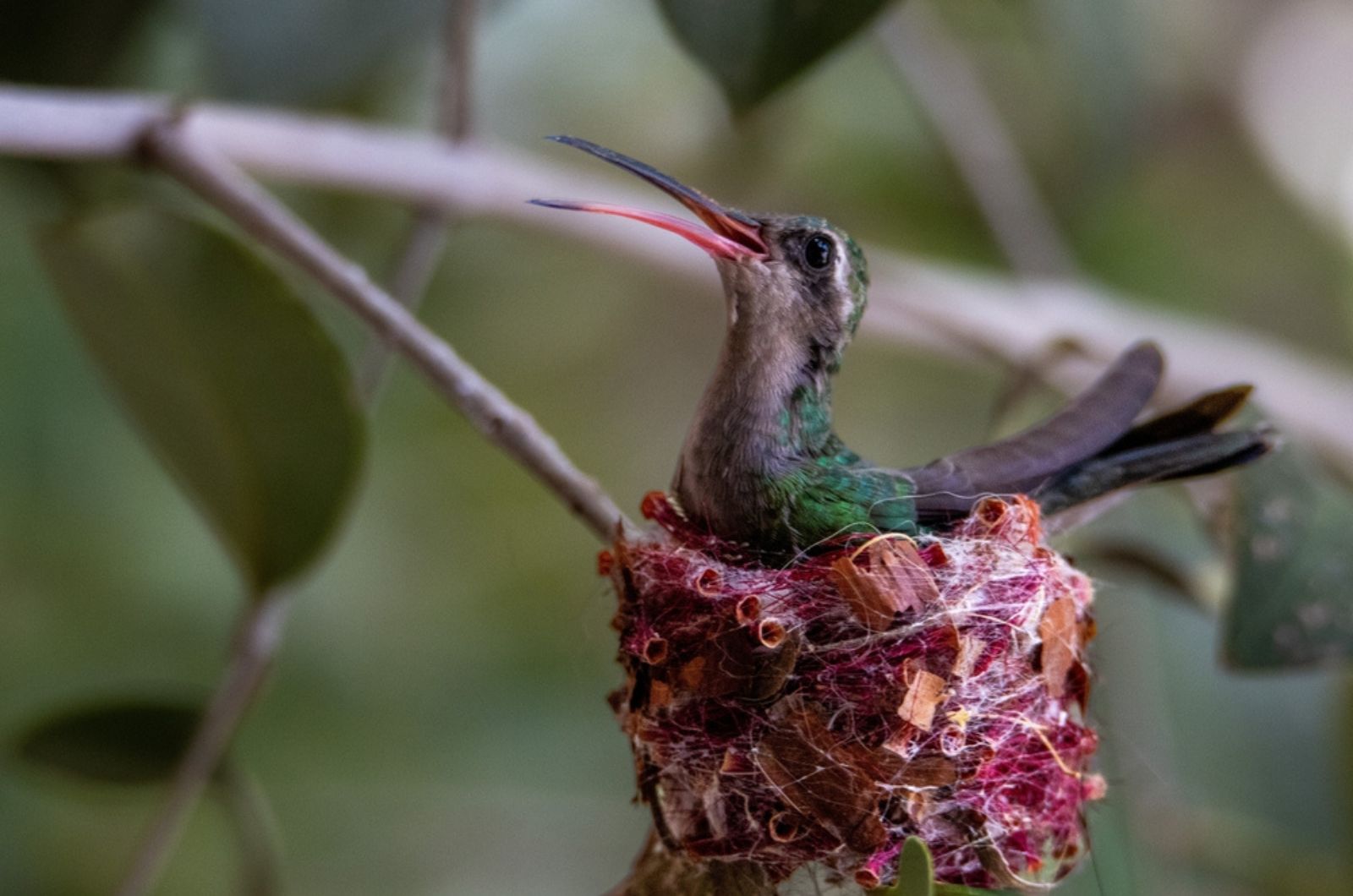Ever chilled in your garden, drink in hand, watching tiny hummingbirds zip around? They’re amazing, right? But spotting baby hummingbirds is like finding a needle in a haystack!
Today, we’ll dive into why they’re so hard to see and what they look like.
Here’s a quick story from my garden. I was watering my cardinal flowers and black orchids (making sure Luna, my dog, didn’t trample them) when I saw something super tiny and cute. Could it be a baby hummingbird?
Grab your binoculars and let’s go find some baby hummingbirds!
Finding That Hummingbird Nest Is The Key
I love hummingbirds and I always tried to attract them into my yard. However, I’ve never actually seen a baby hummingbird in my yard.
After talking to my brother about it, he suggested I look for nests first. He said I should try spotting tiny knots in the tree. Wondering why?
Well, it’s because these little nests are often hidden on thin branches and can look like just any other knot when the birds aren’t around.
They’re usually about an inch across – just the right size for their tiny eggs (which are about the size of a navy bean).
And, of course, I once spent ages thinking I’d found a nest only to discover it was just a stubborn tree knot. But when I finally spotted the real thing, it felt like finding a real treasure!
As the baby birds grow, the nest grows too. The mother bird uses leaves, twigs, and moss to hide the nest, but the real magic is spider silk. She gathers it carefully and lines the nest with it, stretching it as the babies get bigger.
If you see a hummingbird making lots of trips to the same tree, she’s probably building her nest there.
When the baby birds outgrow their nest, the mother won’t use it again. She’ll build a new nest somewhere else. So if you find a nest in your yard, enjoy it while it lasts!
Related: Attracting Hummingbirds To Your Garden With Chocolate Cosmos Has Never Been Easier
Learn To Identify Those Cute Little Babies
Hummingbird nestlings start off looking pretty bare, without any feathers, so they depend on their mothers for warmth and food. They’re incredibly tiny (less than a gram in weight), so they fit snugly inside the nest with plenty of extra space.
Their little feet are too small for standing until they grow a bit (poor babies!), and they won’t have fully developed feathers for about three weeks.
If you’re keeping an eye on a hummingbird family from afar, you might not spot the nestlings until they’re big enough for their heads to peek over the edge during feeding time.
Adult hummingbirds have long beaks, but hatchlings start with much shorter ones, which makes them look like smaller versions of other baby birds in their first week.
By the time they leave the nest, they’ll have grown those impressive long beaks (ready to sip nectar and munch on insects just like their moms).
So, even though finding these tiny nests and using binoculars to see the nestlings can be a bit difficult, it’s definitely worth the try.
Want more hummingbirds? If so, then you should read: If You Want Hummingbirds And Butterflies In Your Yard, You Must Plant This Flowering Ground Cover


